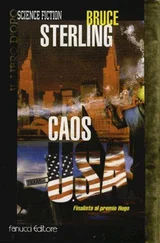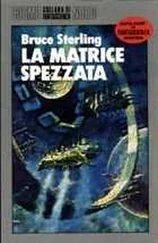Bruce Sterling - Essays. FSF Columns
Здесь есть возможность читать онлайн «Bruce Sterling - Essays. FSF Columns» весь текст электронной книги совершенно бесплатно (целиком полную версию без сокращений). В некоторых случаях можно слушать аудио, скачать через торрент в формате fb2 и присутствует краткое содержание. Жанр: Фантастика и фэнтези, на английском языке. Описание произведения, (предисловие) а так же отзывы посетителей доступны на портале библиотеки ЛибКат.
- Название:Essays. FSF Columns
- Автор:
- Жанр:
- Год:неизвестен
- ISBN:нет данных
- Рейтинг книги:3 / 5. Голосов: 1
-
Избранное:Добавить в избранное
- Отзывы:
-
Ваша оценка:
- 60
- 1
- 2
- 3
- 4
- 5
Essays. FSF Columns: краткое содержание, описание и аннотация
Предлагаем к чтению аннотацию, описание, краткое содержание или предисловие (зависит от того, что написал сам автор книги «Essays. FSF Columns»). Если вы не нашли необходимую информацию о книге — напишите в комментариях, мы постараемся отыскать её.
Essays. FSF Columns — читать онлайн бесплатно полную книгу (весь текст) целиком
Ниже представлен текст книги, разбитый по страницам. Система сохранения места последней прочитанной страницы, позволяет с удобством читать онлайн бесплатно книгу «Essays. FSF Columns», без необходимости каждый раз заново искать на чём Вы остановились. Поставьте закладку, и сможете в любой момент перейти на страницу, на которой закончили чтение.
Интервал:
Закладка:
Or so it's hoped -- and planned. The real Internet of the future may bear very little resemblance to today's plans. Planning has never seemed to have much to do with the seething, fungal development of the Internet. After all, today's Internet bears little resemblance to those original grim plans for RAND's post- holocaust command grid. It's a fine and happy irony.
How does one get access to the Internet? Well -- if you don't have a computer and a modem, get one. Your computer can act as a terminal, and you can use an ordinary telephone line to connect to an Internet-linked machine. These slower and simpler adjuncts to the Internet can provide you with the netnews discussion groups and your own e-mail address. These are services worth having -- though if you only have mail and news, you're not actually "on the Internet" proper.
If you're on a campus, your university may have direct "dedicated access" to high-speed Internet TCP/IP lines. Apply for an Internet account on a dedicated campus machine, and you may be able to get those hot-dog long-distance computing and file-transfer functions. Some cities, such as Cleveland, supply "freenet" community access. Businesses increasingly have Internet access, and are willing to sell it to subscribers. The standard fee is about $40 a month -- about the same as TV cable service.
As the Nineties proceed, finding a link to the Internet will become much cheaper and easier. Its ease of use will also improve, which is fine news, for the savage UNIX interface of TCP/IP leaves plenty of room for advancements in user-friendliness. Learning the Internet now, or at least learning about it, is wise. By the turn of the century, "network literacy," like "computer literacy" before it, will be forcing itself into the very texture of your life.
For Further Reading:
The Whole Internet Catalog & User's Guide by Ed Krol. (1992) O'Reilly and Associates, Inc. A clear, non-jargonized introduction to the intimidating business of network literacy. Many computer- documentation manuals attempt to be funny. Mr. Krol's book is *actually* funny.
The Matrix: Computer Networks and Conferencing Systems Worldwide. by John Quarterman. Digital Press: Bedford, MA. (1990) Massive and highly technical compendium detailing the mind-boggling scope and complexity of our newly networked planet.
The Internet Companion by Tracy LaQuey with Jeanne C. Ryer (1992) Addison Wesley. Evangelical etiquette guide to the Internet featuring anecdotal tales of life-changing Internet experiences. Foreword by Senator Al Gore.
Zen and the Art of the Internet: A Beginner's Guide by Brendan P. Kehoe (1992) Prentice Hall. Brief but useful Internet guide with plenty of good advice on useful machines to paw over for data. Mr Kehoe's guide bears the singularly wonderful distinction of being available in electronic form free of charge. I'm doing the same with all my F&SF Science articles, including, of course, this one. My own Internet address is bruces@well.sf.ca.us.
"Magnetic Vision"
Here on my desk I have something that can only be described as
miraculous. It's a big cardboard envelope with nine thick sheets of
black plastic inside, and on these sheets are pictures of my own brain.
These images are "MRI scans" -- magnetic resonance imagery from
a medical scanner.
These are magnetic windows into the lightless realm inside my
skull. The meat, bone, and various gristles within my head glow gently
in crisp black-and-white detail. There's little of the foggy ghostliness
one sees with, say, dental x-rays. Held up against a bright light, or
placed on a diagnostic light table, the dark plastic sheets reveal veins,
arteries, various odd fluid-stuffed ventricles, and the spongey wrinkles
of my cerebellum. In various shots, I can see the pulp within my own
teeth, the roots of my tongue, the boney caverns of my sinuses, and the
nicely spherical jellies that are my two eyeballs. I can see that the
human brain really does come in two lobes and in three sections, and
that it has gray matter and white matter. The brain is a big whopping
gland, basically, and it fills my skull just like the meat of a walnut.
It's an odd experience to look long and hard at one's own brain.
Though it's quite a privilege to witness this, it's also a form of
narcissism without much historical parallel. Frankly, I don't think I
ever really believed in my own brain until I saw these images. At least,
I never truly comprehended my brain as a tangible physical organ, like
a knuckle or a kneecap. And yet here is the evidence, laid out
irrefutably before me, pixel by monochrome pixel, in a large variety of
angles and in exquisite detail. And I'm told that my brain is quite
healthy and perfectly normal -- anatomically at least. (For a science
fiction writer this news is something of a letdown.)
The discovery of X-rays in 1895, by Wilhelm Roentgen, led to the
first technology that made human flesh transparent. Nowadays, X-rays
can pierce the body through many different angles to produce a
graphic three-dimensional image. This 3-D technique, "Computerized
Axial Tomography" or the CAT-scan, won a Nobel Prize in 1979 for its
originators, Godfrey Hounsfield and Allan Cormack.
Sonography uses ultrasound to study human tissue through its
reflection of high-frequency vibration: sonography is a sonic window.
Magnetic resonance imaging, however, is a more sophisticated
window yet. It is rivalled only by the lesser-known and still rather
experimental PET-scan, or Positron Emission Tomography. PET-
scanning requires an injection of radioactive isotopes into the body so
that their decay can be tracked within human tissues. Magnetic
resonance, though it is sometimes known as Nuclear Magnetic
Resonance, does not involve radioactivity.
The phenomenon of "nuclear magnetic resonance" was
discovered in 1946 by Edward Purcell of Harvard, and Felix Block of
Stanford. Purcell and Block were working separately, but published
their findings within a month of one another. In 1952, Purcell and
Block won a joint Nobel Prize for their discovery.
If an atom has an odd number of protons and neutrons, it will
have what is known as a "magnetic moment:" it will spin, and its axis
will tilt in a certain direction. When that tilted nucleus is put into a
magnetic field, the axis of the tilt will change, and the nucleus will also
wobble at a certain speed. If radio waves are then beamed at the
wobbling nucleus at just the proper wavelength, they will cause the
wobbling to intensify -- this is the "magnetic resonance" phenomenon.
The resonant frequency is known as the Larmor frequency, and the
Larmor frequencies vary for different atoms.
Hydrogen, for instance, has a Larmor frequency of 42.58
megahertz. Hydrogen, which is a major constituent of water and of
carbohydrates such as fat, is very common in the human body. If radio
waves at this Larmor frequency are beamed into magnetized hydrogen
atoms, the hydrogen nuclei will absorb the resonant energy until they
reach a state of excitation. When the beam goes off, the hydrogen
nuclei will relax again, each nucleus emitting a tiny burst of radio
energy as it returns to its original state. The nuclei will also relax at
slightly different rates, depending on the chemical circumstances
around the hydrogen atom. Hydrogen behaves differently in different
kinds of human tissue. Those relaxation bursts can be detected, and
timed, and mapped.
The enormously powerful magnetic field within an MRI machine
can permeate the human body; but the resonant Larmor frequency is
Читать дальшеИнтервал:
Закладка:
Похожие книги на «Essays. FSF Columns»
Представляем Вашему вниманию похожие книги на «Essays. FSF Columns» списком для выбора. Мы отобрали схожую по названию и смыслу литературу в надежде предоставить читателям больше вариантов отыскать новые, интересные, ещё непрочитанные произведения.
Обсуждение, отзывы о книге «Essays. FSF Columns» и просто собственные мнения читателей. Оставьте ваши комментарии, напишите, что Вы думаете о произведении, его смысле или главных героях. Укажите что конкретно понравилось, а что нет, и почему Вы так считаете.



